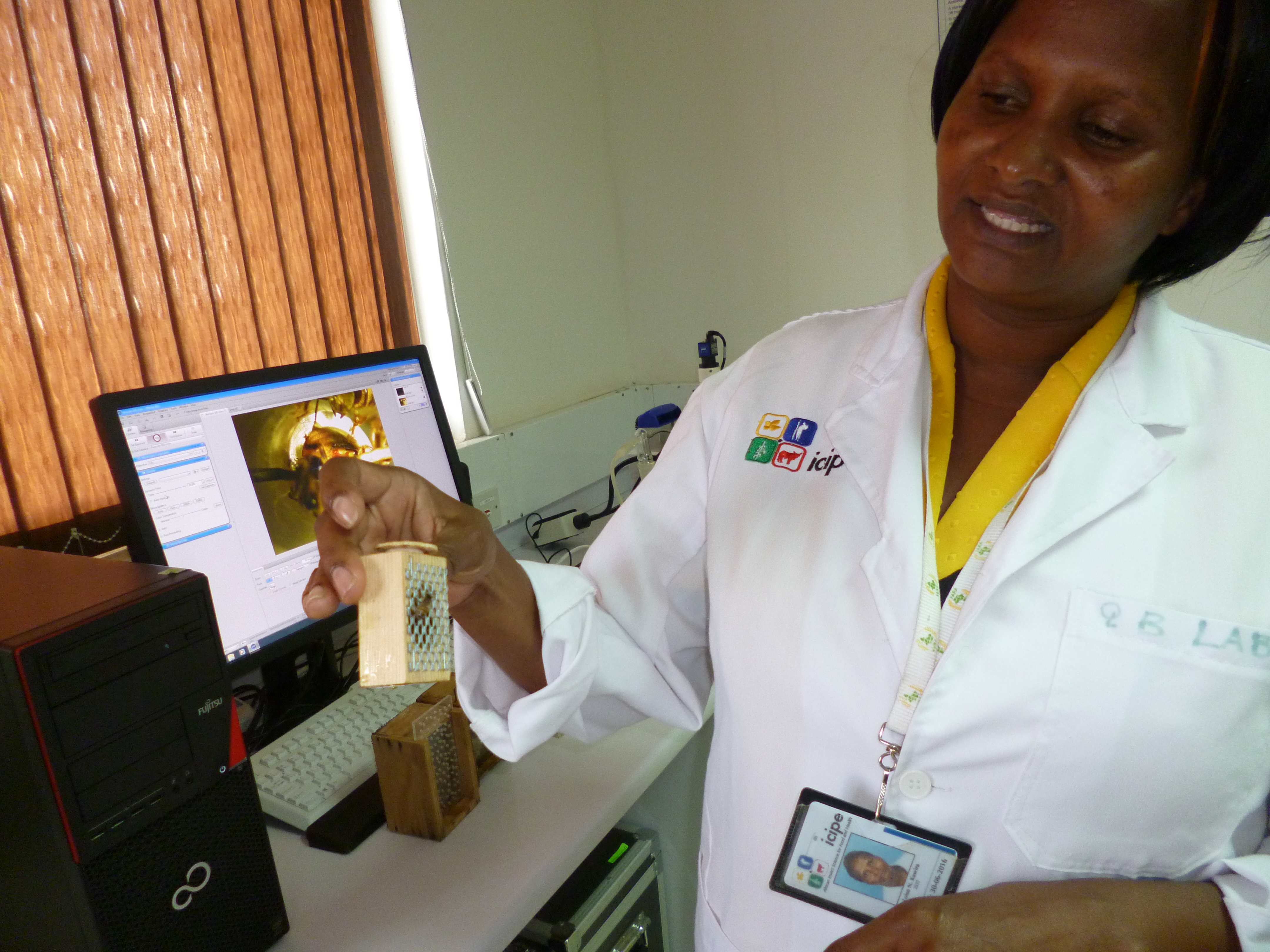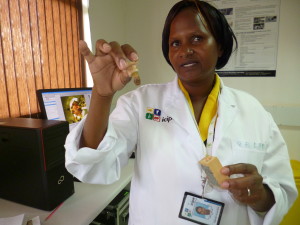By Mary Mwendwa
Dressed in a white lab coat, a tall brown charming scientist moves her one eye tightly closed in a huge microscope where a queen bee has been sedated in a transparent tube as she watches her through a monitor.
Loise Kawira picks a drone (male bee) and squeezes the thorax where she picks semen using a capillary.”This process is delicate and it needs one to be very careful when sedating the queen bee because if she stays longer in the tube with carbon dioxide there are high chances of losing her.”
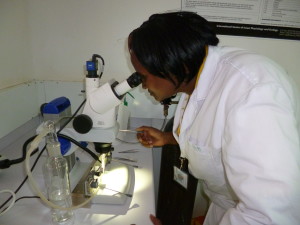
Loise,Research Associate at ICIPE (African Insect Science For Food and Health ), was among scientists who displayed their work to guests during a recent two day science day . Guests were taken through presentations and later joined small groups which took them around displays of Icipe and hosted technologies. Some of them included push –pull plot,a typical hut utilizing Icipe’s integrated vector management strategies for Malaria, cattle with Tsetse Repellent collar technology ; emerging infectious Diseases and the African Reference Laboratory for Bee Health.
At the African Reference Laboratory for Bee Health complex is where Loise works at a Bee insemination Laboratory.
She narrates to me her journey of success as the only African woman who breeds bees; “This was a journey that started some time back when I joined Icipe for internship while doing applied biology in college in 1996. I was given a chance to work on biological control of ticks using fungi. It is here that I got the opportunity to interact with science at its best. I concluded my internship and went back to college to complete my studies.”
Loise continues to say that after college she decided to go back to Icipe again to look for work.”When I landed at Icipe, sadly the scientist who I had earlier worked with had left and therefore that put me in dilemma .I decided to talk to Prof. Suresh Kumar Raina, Principal Research Scientist and team leader on the Bee Health Project, who gladly agreed to give me a chance where I was the only woman who worked in the apiary. Working in the apiary is not a job that many women like , but I like adventures and working with new things, more so I was fascinated by bees and I got into this job with full heart.”
During that time Loise got to work on bee products like honey, royal jelly and with time she got into queen breeding.
“Queen bee rearing process is needed because of the disasters like diseases and Varoa mites that occur to bees world wide and has contributed to their reduction in numbers, therefore we select breeds that are resistant to diseases to help farmers maintain their colonies without losing them. The bees are selected in line with their hygienic behavior which is done for several generations to get a pure breed.”
Some queen breeds are gentle and that is one characteristic that farmers look for , some more productive and less swarming tendency. My intention as a scientist working with bees is to help the community and help technology transfer with machines to other countries that do not have the same.
So, how does the Queen insemination process work?
“First, drones are picked, feed on honey or worker bees are put in a cage to feed drones. The queen matures after 16 days , drone 24 days and worker bee 21 days. After the queens emerge, on the sixth day they are confined in a cage and exposed to carbon dioxide for seven minutes. This helps their ovaries to get ready for insemination on the seventh day . Now to get semen out of the drone, one holds the thorax and squeezes to expose the endophilus , semen is located at the tip and therefore after squeezing two small cornua pop out and therefore one needs to press further to have a complete eversion.
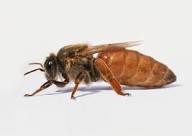
On a microscope plate the queen bee is put in a transparent conical tube and here carbon dioxide is passed through to sedate the queen. Then the capillary is directed to the vaginal opening of queen bee where semen ejected. The Queen’s body movement can be seen at the projector screen which is slow in nature indicating that it is still alive. The whole process takes less than five minutes and queen is taken to hive ready to start laying eggs. ” A keen Loise explains.
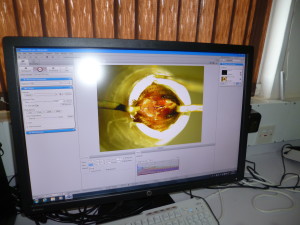
Loise says that this is work in progress where they are looking forward to produce a pure line of bee breed. She inseminates at least ten queen bees in the laboratory for research purposes. She also helps train farmers on how to raise queen bees to allow them to undergo natural mating.She realizes that Kenya is best in Bee Technology in Africa , something that makes her proud .
The 39 year old mother of two believes that Africa stands to benefit a lot through queen breeding as this will help them maintain desirable traits of bees and improve on races. This will help improve on food security because bees help in pollination of most food crops, cosmetic products and honey , royal jelly play an important role in human health.
The Kenya Economic Indicator survey 2015 revealed that the value of marketed fresh horticultural produce increased marginally from KSh 83.4 billion in 2013 to KSh 84.1 billion in 2014. The slight increase in value was attributed to better unit prices for fruits and higher volumes of flowers and fruits exported.
Loise was born in Nkio village in Meru County, went to Nkio primary school and Muthambi girls secondary school and has studied Bachelor of Philosophy in Applied Biology ,and finishing on her masters degree in Agriculture Entomology at JKUAT.
Her parting shot; ”I love bees, and any time I like working on bees, they are interesting small insects that impact human life in a big way, bees are fascinating.”

